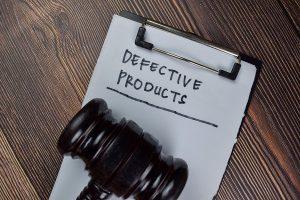What Injuries Can You Get From Using Defective Products?
 Michael Babboni
Recalls
Manufacturing companies should always ensure that their products are safe for use and consumption. However, there are times when defects are undetected during quality assurance checks. There are different manufacturing defects that can cause accidents, which leads to various injuries and damages.
Michael Babboni
Recalls
Manufacturing companies should always ensure that their products are safe for use and consumption. However, there are times when defects are undetected during quality assurance checks. There are different manufacturing defects that can cause accidents, which leads to various injuries and damages.Depending on the kind of product, how it’s used, and how grave the defect is, you can suffer great injuries. It does not hurt to be prudent and know what to expect, so here are the kinds of injuries that you can get after using a defective product.
3 Kinds of Injuries Caused By Defective Products:
• Cuts, Burns, And Bruises - Product defects can cause items to be brittle and easy to break. For instance, glass materials that have unnoticeable cracks or nicks can cut your skin and give you wounds. Other accidents such as the explosion of defective appliances can also result in deep cuts and bruises from flying shards and debris of the material.
• Choking - This usually when happens to children who have accidentally eaten parts of toys or other products with small parts. While this can be preventable by simply putting choke hazards away, there are many cases where lack or wrong instructions can cause you to put your guard down and think that something is actually safe for children.
An example of this is putting the wrong or inaccurate age group for toys. Those that are labeled good for 3 year-olds might actually not be safe for them and can cause them to choke.
• Head Injuries And Bone Fractures - You can sustain head injuries and broken bones from accidents caused by things like defective vehicles or defective protective gear that should not have passed the quality test. These injuries are very serious and can cause permanent damage to your body like scars, limps, memory loss, paralysis, and many more. These injuries can also affect your lifestyle and can hinder you from continuing your work.
To avoid suffering from the injuries above, being knowledgeable about the kinds of product defects you should watch out for can also help.
• Defective Product Design - Do not be fooled by how good a product looks. While it may be appealing to the eyes, the design might not fit its purpose and can cause you problems. Be aware that there are manufacturers that put design and aesthetics first before usability and quality. Examine an item carefully and see if, despite its unique shape or size, can perform its intended function with no problem.
• Manufacturing Defect - As mentioned above, there are times when product defects go undetected during quality control. Small chips, cracks, wrong assembly, and missing parts can all be considered manufacturing defects. Using items with these defects can lead to accidents that can cause minor to serious injuries like cuts and burns. Before using an item, see if everything looks right and that there are no flaws.
• Failure To Put Appropriate Warnings - Using an item incorrectly due to misleading or lack of instructions and warning labels is considered a defect. Manufacturers are responsible for informing their consumers about the product, from how it should be used properly so you can avoid injuries, to informing you about who can and cannot use the product.
Accidents from using defective products are still unavoidable sometimes. When this happens to you, don’t forget to collect evidence, get your injuries treated, and reach out to a personal injury lawyer who can help you file a claim for damages as it is your right.
